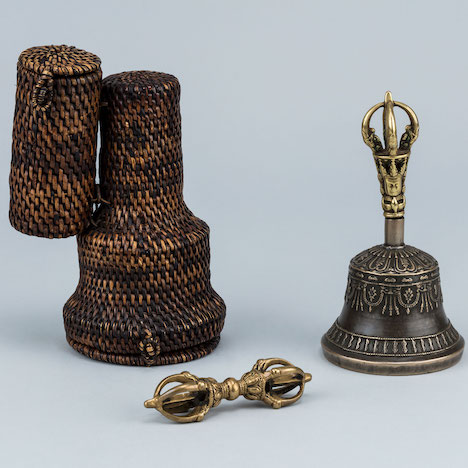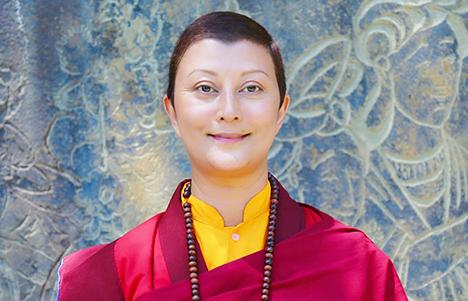
About the Meditation
Meditation session led by Lama Aria Drolma.
The guided meditation begins at 13:25.
For centuries Himalayan practitioners have used meditation to quiet the mind, open the heart, calm the nervous system, and increase focus. Now Western scientists, business leaders, and the secular world have embraced meditation as a vital tool for brain health.
Whether you’re a beginner, a dabbler, or a skilled meditator seeking the company of others, join expert teachers in a forty-five-minute weekly program designed to fit into your lunch break. Each session will be inspired by a different work of art from the Rubin Museum’s collection and will include an opening talk, a twenty-minute meditation session, and a closing discussion.
Presented in partnership with Sharon Salzberg and the Interdependence Project and Parabola Magazine.
RELATED ARTWORK

Theme: Interconnectedness
The Vajra, initially well-known as the scepter of Indra, expressed his mastery over the world. It came to assume tremendous importance in Tantric philosophy and symbolism. While the original symbolic significance remained relevant, because the Vajra wielded by Buddhist Tantric deities may be taken as expressing their mastery over the world of existence, the Vajra came to symbolize a great deal more in Buddhist iconography. It seems the primary significance of the Vajra in Buddhist Tantric thought is as a symbol of the indestructible nature of the ultimate truth. In this sense, the term Vajra is often explained as synonymous with emptiness (sunyata) which is indestructible. The Vajra is said to be superior to all things in that while it is capable of destroying anything with which it comes into contact, it, like a diamond, remains unaffected. It may well be that this explanation of the significance of the term Vajra led to the employment of the term Vajrayana as designation of Tantric Buddhism in general. The connection may become clearer if it is recalled that through Tantric methodology situations and emotions normally injurious to spiritual progress can be appropriated and turned to a religious purpose without in any way adversely affecting the Tantric practitioner. Again, in other contexts such as when it is found in association with the Vajra ghanta as in the case of Vajra-sattva, the Vajra represents skilful means, the active component of the ultimate attainment of Buddhahood, while the Vajra-ghanta, or bell, represents wisdom.
In Buddhism, bells have many important meanings. They are often used as a call to prayer as they can be heard even at great distances. The ring of the bell can represent the heavenly enlightened voice of the Buddha teaching the dharma and can also be used as a call for protection and as a way to ward off evil spirits
Hearing the bell, we make our minds one with the sound of the bell, allowing our minds to vibrate along and settle down with the sound of the bell as it fades away. In this way the mind is collected and brought back into the present moment. The “Bell of Mindfulness” is the voice of the Buddha calling us back to ourselves. We have to respect such a sound, stop our thinking and talking, and get back in touch with ourselves, breathing and smiling.
About the Speaker

Lama Aria Drolma is an ordained Buddhist teacher in the Karma Kagyu tradition of Tibetan Buddhism who has completed over a decade of monastic study and meditation training. She is a graduate of the traditional Tibetan Buddhist retreat program spanning three years and three months, an advanced cloistered meditation training program at Palpung Thubten Choling Monastery, New York.
Lama Aria Drolma teaches worldwide, leading retreats, workshops, and corporate meditation programs and is a popular guest speaker at universities and organizations. She emphasizes Vajrayana Buddhism and Buddhist principles, making them relevant in our everyday lives, helping us to cultivate loving kindness and compassion, and bringing about a transformation of contentment and a genuine sense of well-being.
